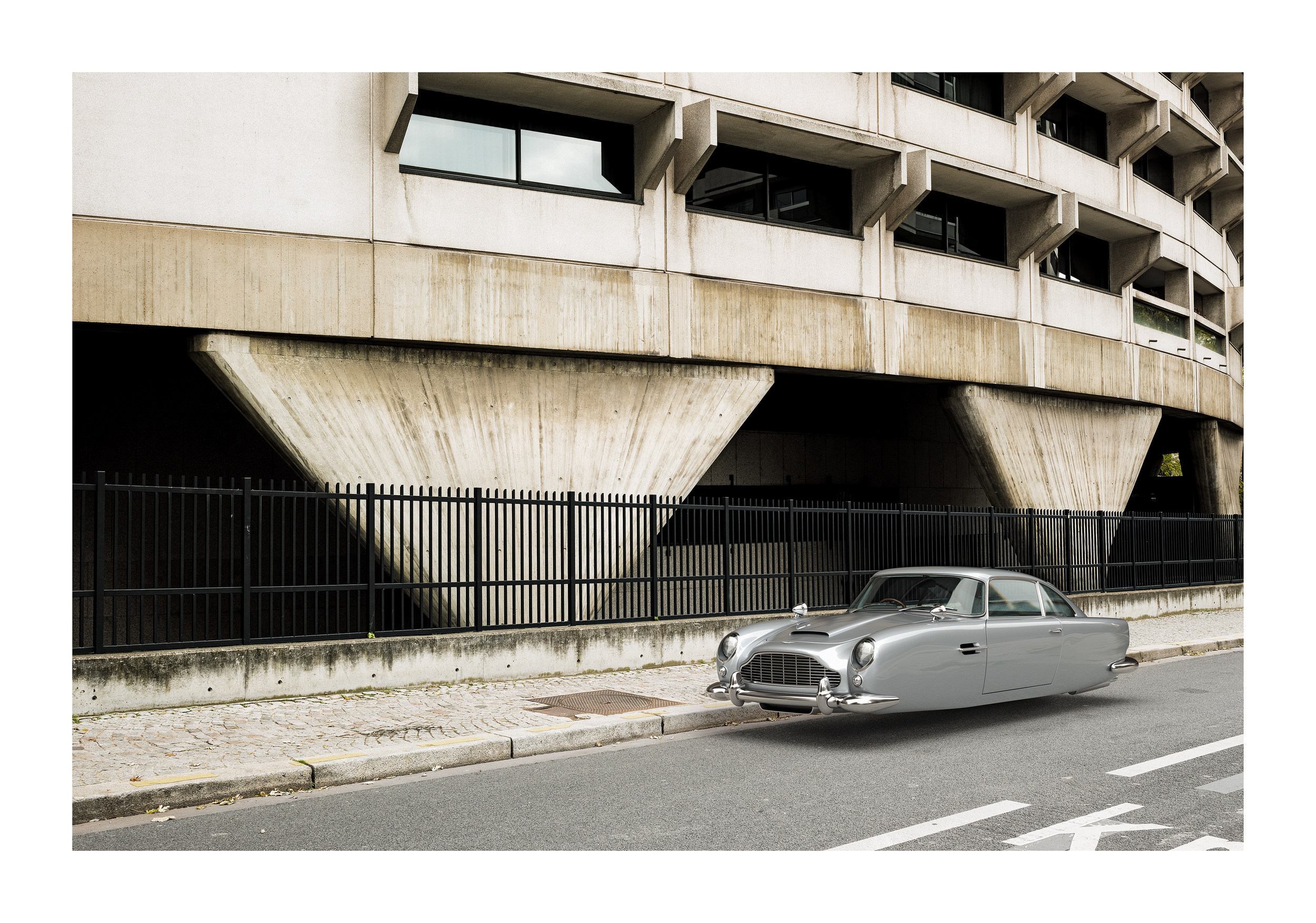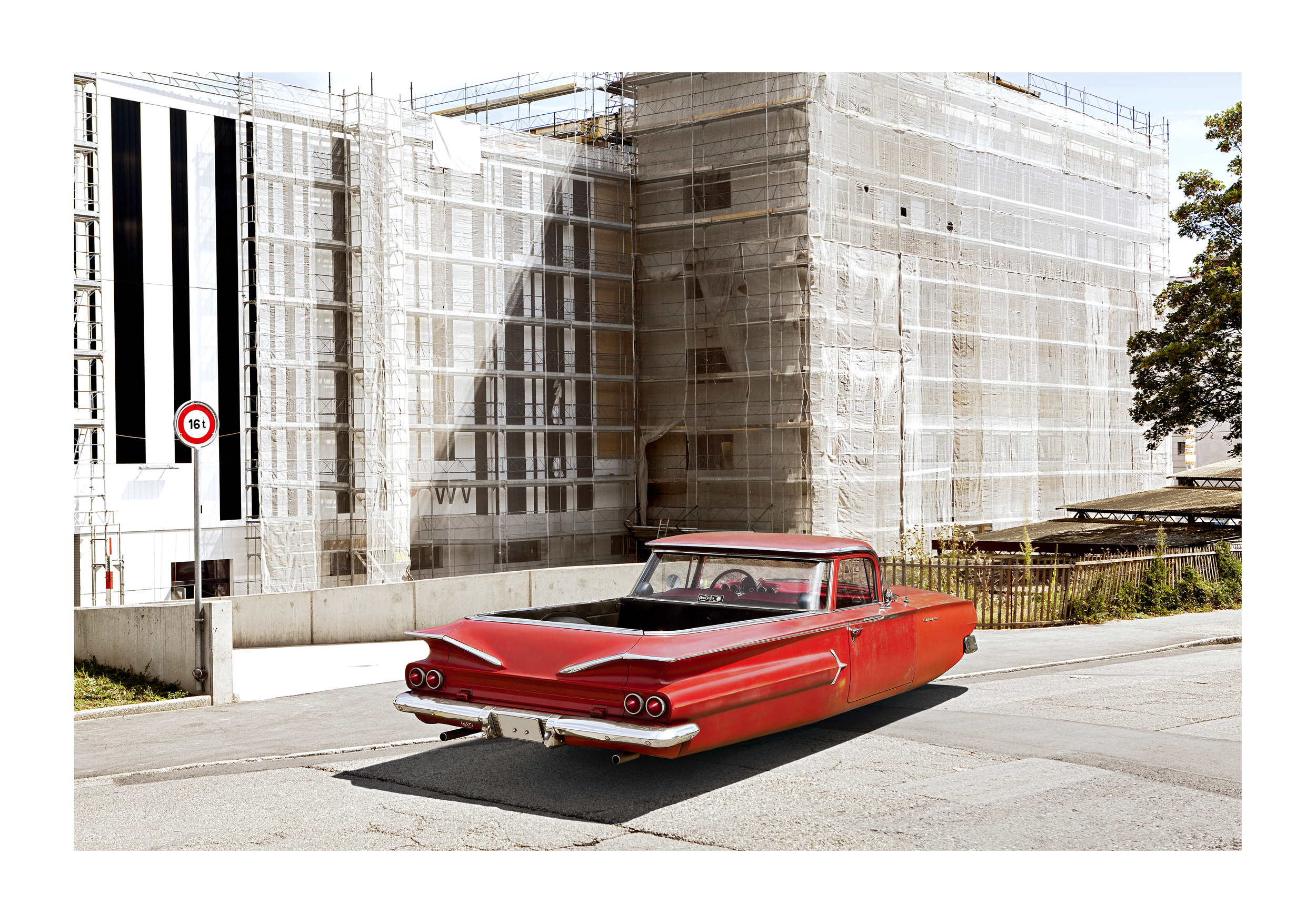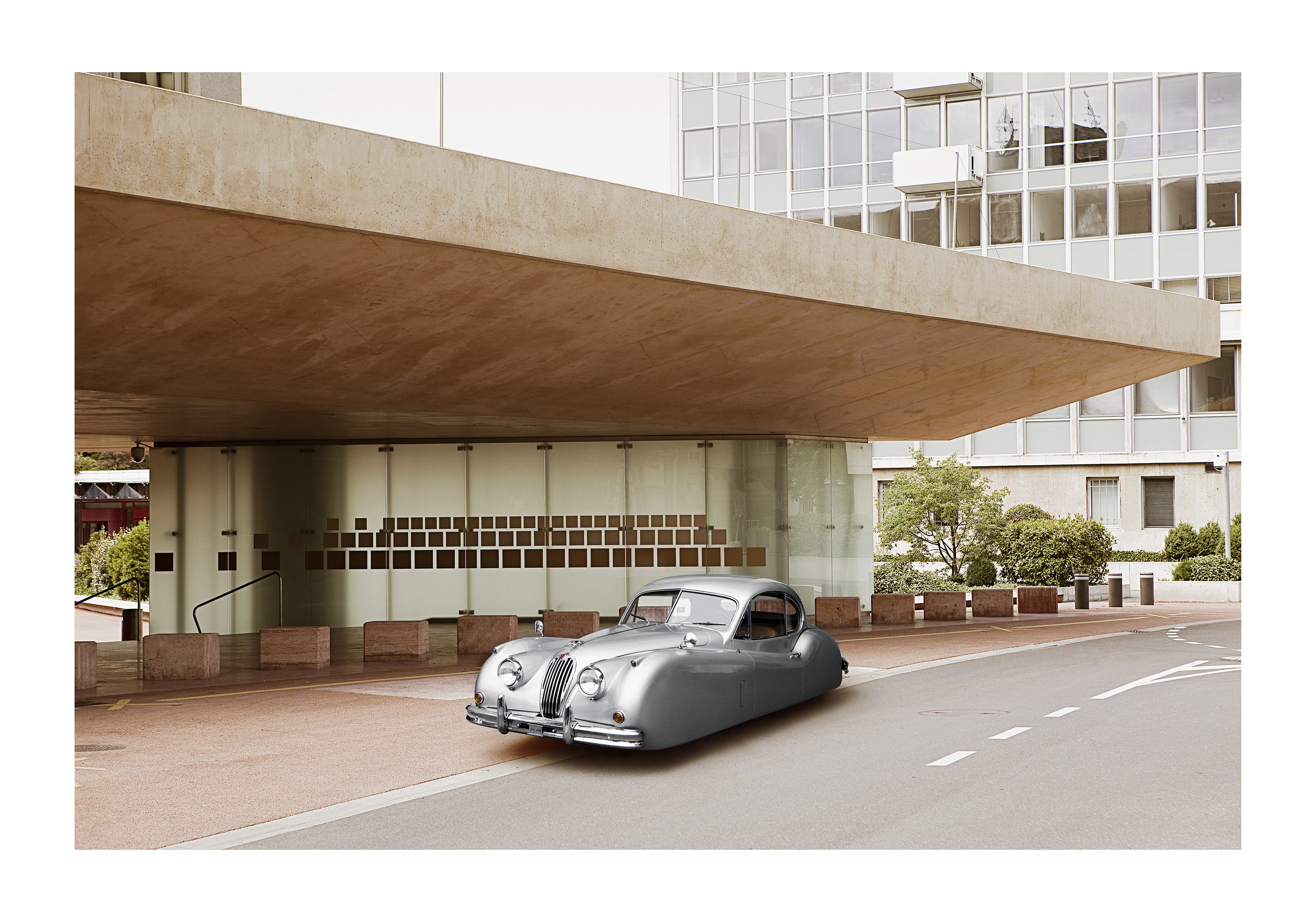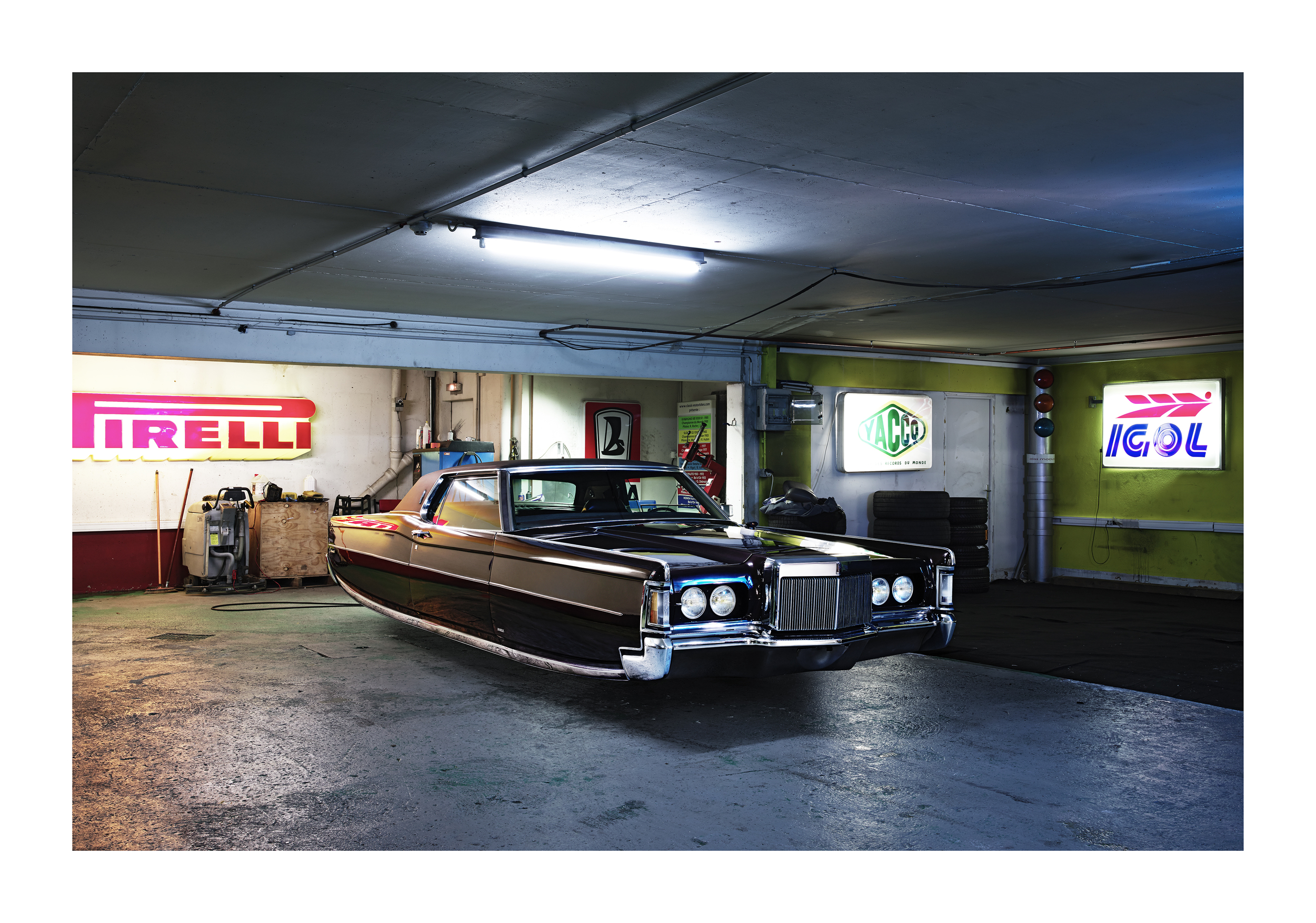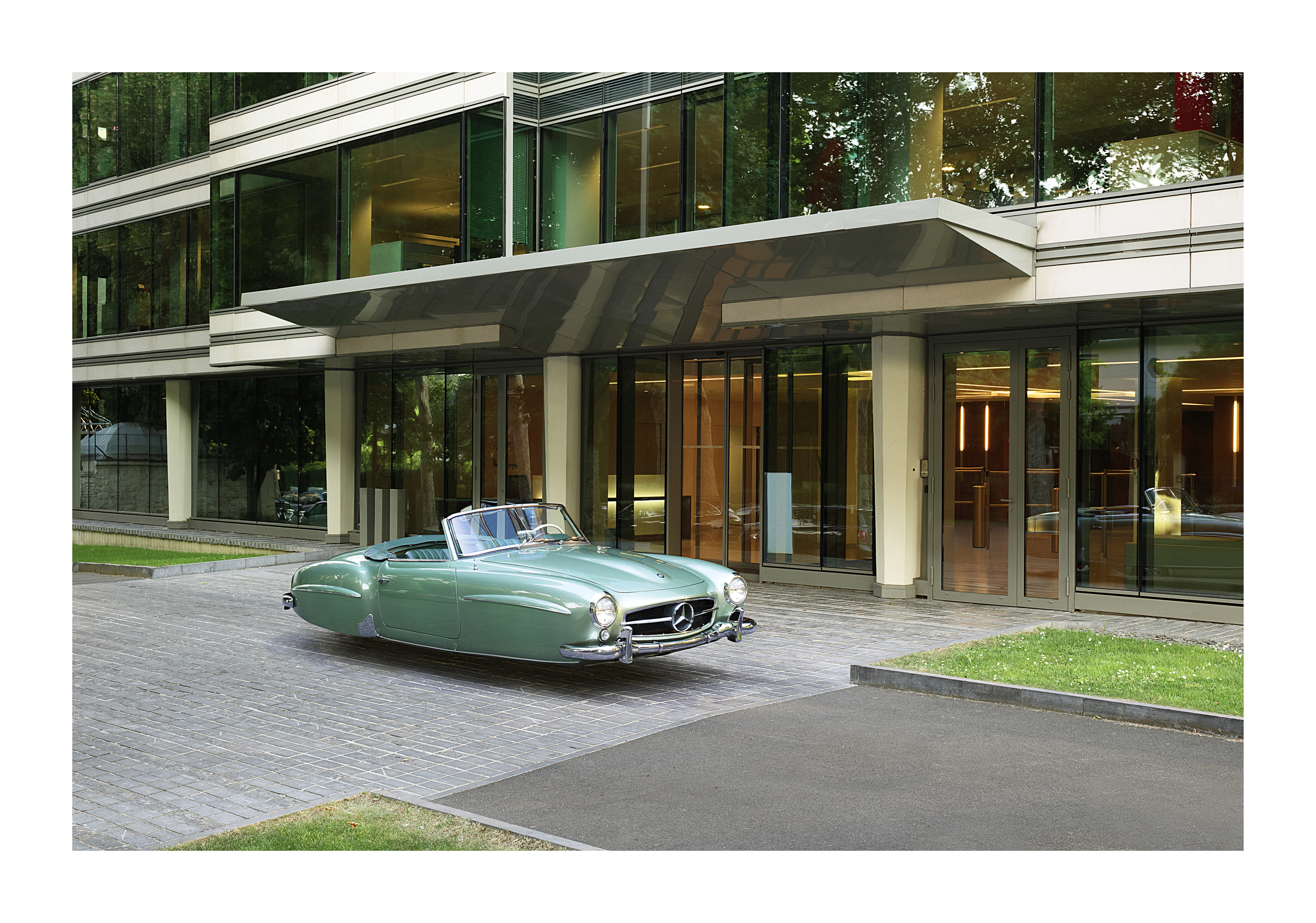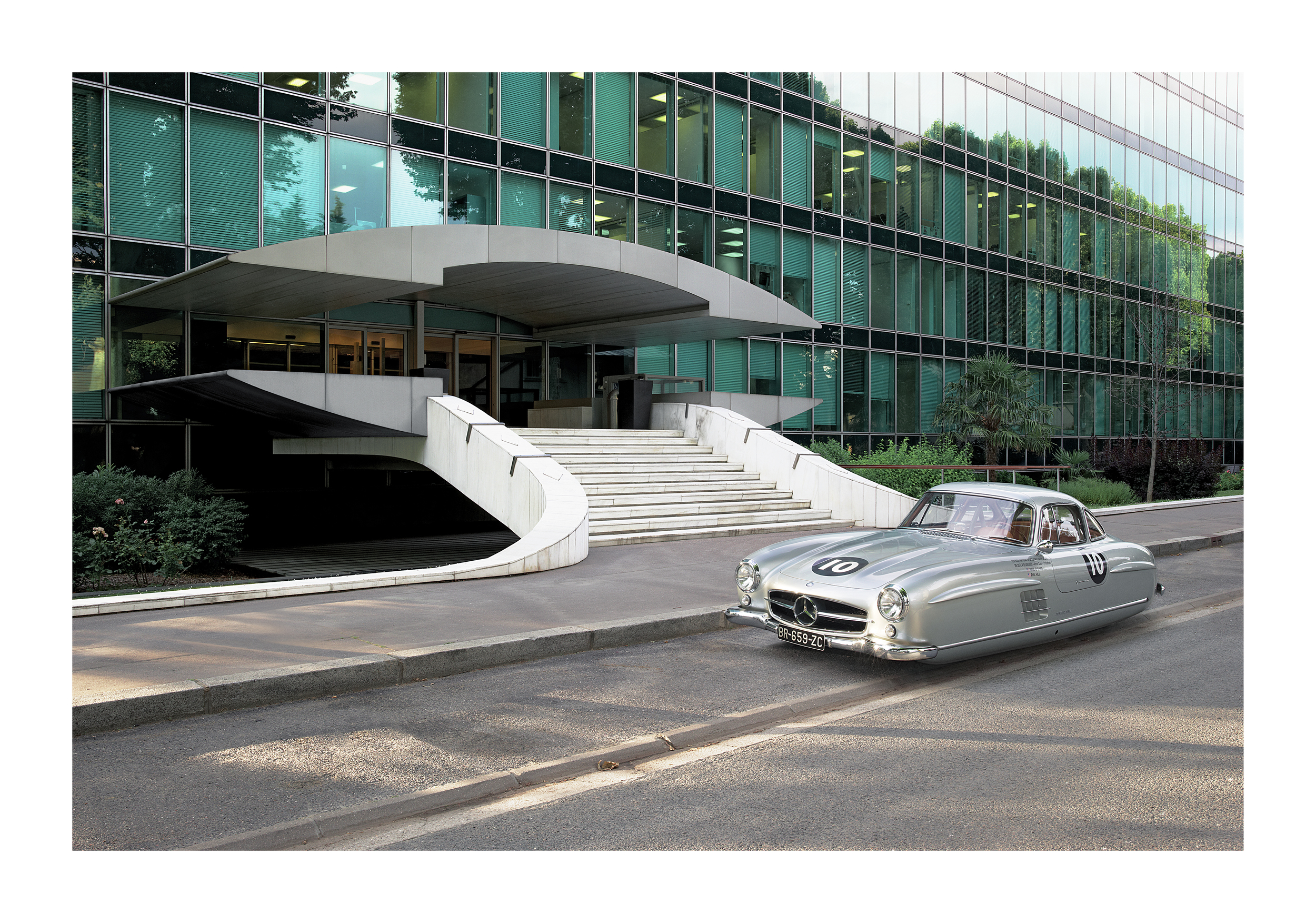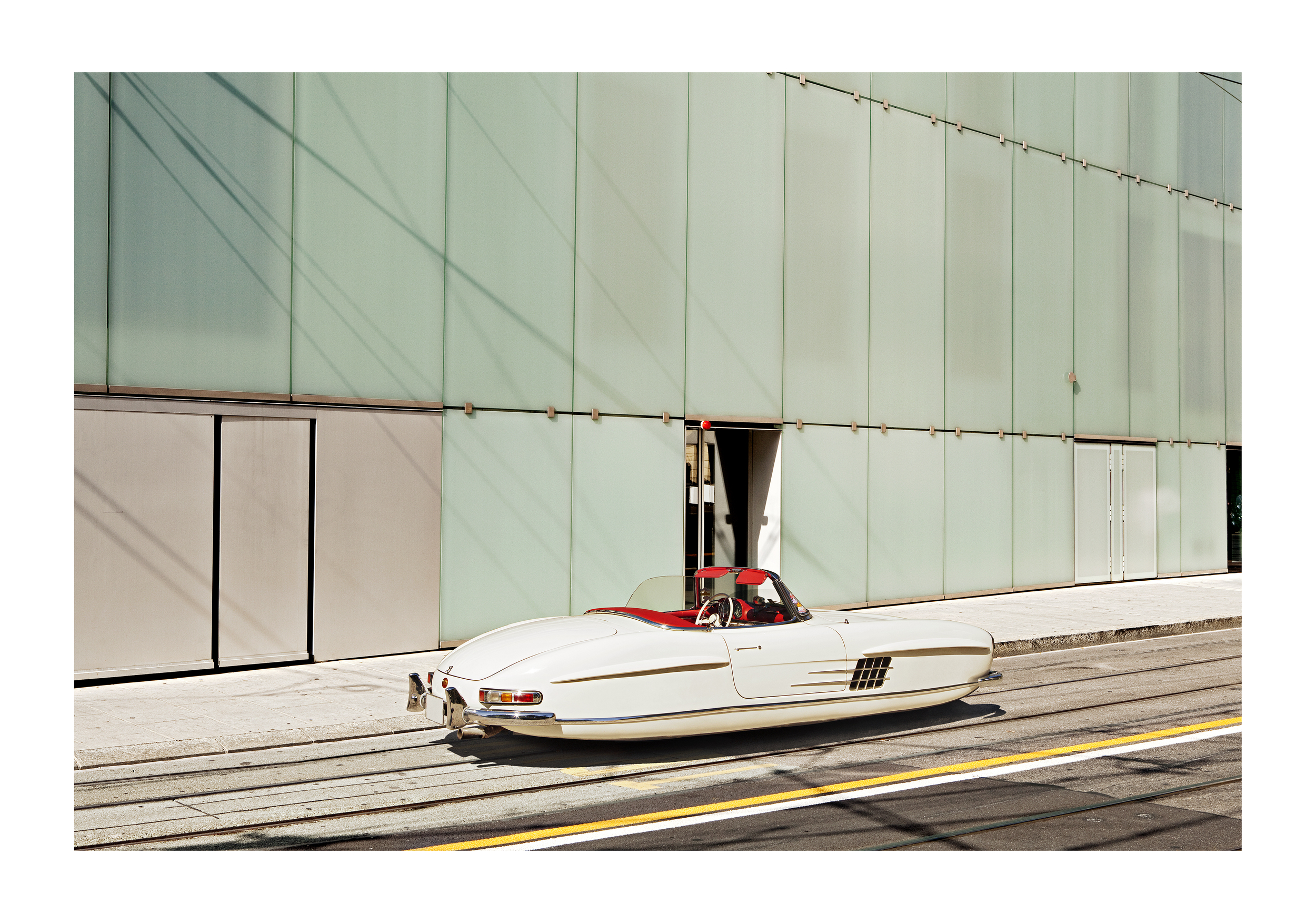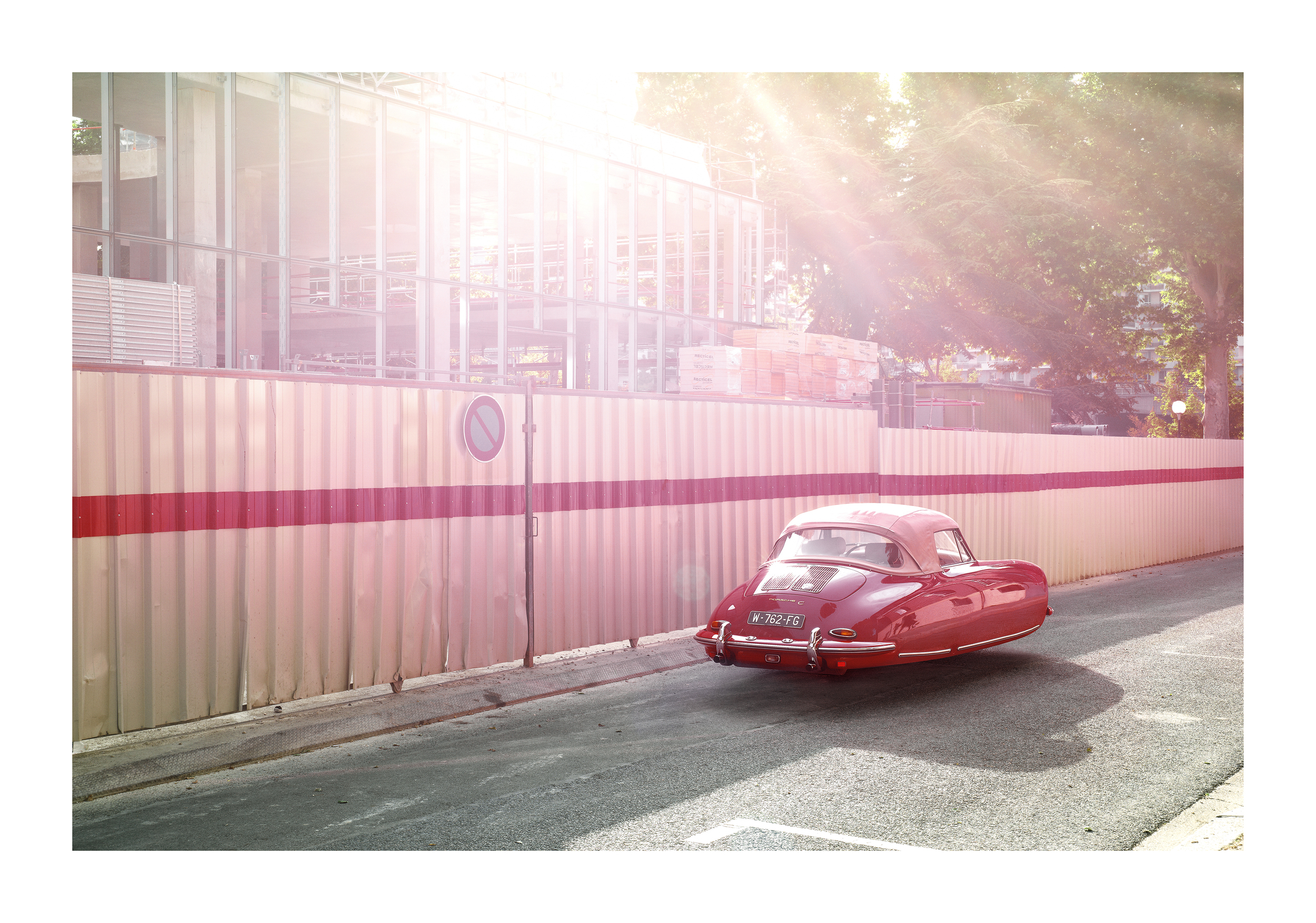







Art

Ink the Deal: Shen Jingdong
Chinese artist Shen Jingdong’s cartoon soldiers revitalise a centuries-old tradition by invoking a contemporary – and playful – aesthetic
Ink the Deal: Shen Jingdong
Chinese artist Shen Jingdong’s cartoon soldiers revitalise a centuries-old tradition by invoking a contemporary – and playful – aesthetic
Culture > Art |
Ink the Deal
October 30, 2015
Shen Jingdong’s new Hong Kong exhibition, Dawn of a New Age: Ink Redefined, comprises 13 pieces and presents the transformation of the artist’s work from sculpture to ink on paper.
“Chinese ink painting is the quintessential art form of Chinese civilisation; my aim is to revitalise this centuries-old tradition to give it a distinctly contemporary aesthetic,” says the artist. He has mastered the art of depicting serious-looking soldiers with a distinct cartoon-style charm.
His collection of action-figure-sized ceramic sculptures is known as the “Hero” series.
In the new ink series, traces of Shen’s iconic style can also be found, particularly in the white space on the faces of the characters, which serves to highlight the reflection similar to that seen on a porcelain statue.
Dawn of a New Age is showing until January 21 at Art Futures Gallery, 85 Hollywood Road, Sheung Wan.
![]()
All images: courtesy of Art Futures Gallery

A Brush with Greatness: Olivier Widmaier Picasso
A photo exhibition of legendary artists at work, curated by Pablo Picasso's grandson, visits China
A Brush with Greatness: Olivier Widmaier Picasso
A photo exhibition of legendary artists at work, curated by Pablo Picasso's grandson, visits China
Culture > Art |
A Brush with Greatness
September 25, 2015 / by Anthony Cohen
The photo exhibition Revealed, curated by Olivier Widmaier Picasso, grandson of Pablo Picasso, offering a behind-the-scenes glimpse of some renowned artists’ creative processes, is visiting China for the first time. Taking an intimate look at some of the world’s greatest modern artists at work, the exhibition will showcase 30 hand-selected photographs from the archives of French weekly magazine Paris Match.
Among them is a black-and-white image of Pablo Picasso eyeing a Dalmatian that is evidently longing to climb onto his lap; Salvador Dalí sitting in an animal enclosure at the Paris Zoological Park; Jeff Koons styling a BMW for the 24 Hours of Le Mans; Pierre Soulages crouching over a work in progress; Kees van Dongen painting a posing Brigitte Bardot; and other striking images depicting René Magritte, Marc Chagall, Fernando Botero, Joan Miró, Jean Cocteau, Francis Bacon and more.
The curator, Widmaier Picasso, author of Picasso, portrait intime, published in November 2013, is an audiovisual media producer and adviser, as well as a licence developer for numerous artists including his grandfather. His mother, Maya, is the daughter of Pablo Picasso and Marie-Thérèse Walter, with whom the artist had a relationship from 1927 to the mid-1930s.
Revealed visits Shanghai during autumn 2015, after taking in five cities in North America and another five in Europe. Future destinations include Bangkok, Auckland, Sydney and Melbourne.
Sofitel Shanghai Hyland – October 13, 2015 to November 2, 2015
![]()

Boo Boo Bee Doo! Pin-Up Art
Long thought of as disposable eye candy, the pin-up illustrations of the 1950s and '60s are now coming to be viewed as fine art
Boo Boo Bee Doo! Pin-Up Art
Long thought of as disposable eye candy, the pin-up illustrations of the 1950s and '60s are now coming to be viewed as fine art
Culture > Art |
Boo Boo Bee Doo!
September 25, 2015 / by Constance Shen
The pin-up, a term used for women considered pleasing to the eye, including a mild element of the sexually exciting, became a prominent feature of posters and calendars in the late 1950s and ’60s, and an important part of American popular culture. The term was coined during World War II when American servicemen would pin pictures, often photos or illustrations of beautiful women, to their bunks or in their aircraft.
From the wholesome-looking “girl next door” to the alluring sirens of the silver screen, fantasy women were depicted looking back over their shoulders or lying with an arched back, the illustrators' works eventually becoming little masterpieces of conception, composition, colour and technique. However, only in recent decades have these commercial illustrators also been recognised as fine artists.
Most of their names are lost to us – the original artwork they did for publishers was often discarded once prints had been made – but others are still well known. Gil Elvgren was among the leading pin-up artists of the 1950s, while other major figures included Earl Moran, who worked in pastels, oils and regularly painted Marilyn Monroe; Alberto Vargas, who favoured watercolours; and Rolf Armstrong, who used pastels.
In his book The Great American Pin-Up, co-authored with Charles Martignette, Louis K Meisel says Elvgren alone was prolific and important enough to support a major book; he produced more than 500 pin-up paintings between the mid ’30s and the early ’70s.
Meisel notes that virtually all Elvgren’s paintings were fully developed works of art in oil on canvas.
His images bring another era vividly to life, while the enduring appeal of his art and that of others like him shows how elements of a culture thought of as disposable at the time can go on to become sought-after treasures of the future.
His images bring another era vividly to life, while the enduring appeal of his art and that of others like him shows how elements of a culture thought of as disposable at the time can go on to become sought-after treasures of the future. ![]()
©Corbis

Street Poet of the Pixel: Michael Kistler
Michael Kistler is a Hong Kong-based photographer specialising in fine-art urban photography. He speaks about his work, the electronic easel of contemporary photography, and the effects of Instagram
Street Poet of the Pixel: Michael Kistler
Michael Kistler is a Hong Kong-based photographer specialising in fine-art urban photography. He speaks about his work, the electronic easel of contemporary photography, and the effects of Instagram
Culture > Art |
Street Poet of the Pixel
September 25, 2015 / Photo: Edmond Tang
Michael Kistler is a Hong Kong-based photographer specialising in fine-art urban photography. He speaks about his work, the electronic easel of contemporary photography, and the effects of Instagram.
Tell us about your new venture with Mandarin Oriental.
I will be working with the Mandarin Oriental to provide customised urban-photography excursions to their guests. The idea is to introduce people to a more creative and artistic way of seeing Hong Kong while at the same time exposing them to various photo techniques and striving to improve their understanding of urban composition.
Who are your favourite photographers and why?
There are a lot of photographers I like, and I am an avid collector of photography books. My favourites include Daidō Moriyama, Saul Leiter and
Ho Fan. I like the way Moriyama smashed convention. He has a unique style of shooting and I also love his penchant for odd angles and heavy contrast. Leiter's work is highly artistic and he was doing things with colour at a time when no one else was. There is a painterly quality to his work that I love. Ho is a more recent discovery for me. His creativity and eye for composition are unparalleled, and in particular I like how he uses light and shadow.
Read More
How would you describe your work and your photographic style?
I am a street photographer, but it's the definition of street photography that I struggle with. I am much less interested in documenting so-called street life than I am with creating something compelling or artistic out of a fleeting moment. Movement and motion have always been principal elements of my style and since I've lived in Hong Kong I am incorporating more architecture and geometry into what I shoot. Again, I am more concerned with creating art than I am with documenting daily life.
Is iPhone photography stressful – the feeling that you're missing so many shots each second?
I'm not sure I'd use the word stressful but there is something compulsive about shooting on an iPhone that feels different from when I am using my Canon. There is that sense that you have to capture everything, which of course is nonsensical because there is always another moment, especially in a city like Hong Kong. No doubt, though, that I shoot very differently depending on which camera I'm using. Shooting on the iPhone is a lot more free-flowing, lending itself to images that I think can often be more raw or real. There are a lot of photographers who will discount the virtues of mobile photography, but in many ways I think it is a very pure and unadulterated way to shoot. In the end photography is really quite simple: light, composition and the moment.
What are the most common mistakes amateur photographers make?
Worrying too much about technical details. Of course it's important to know how to use your camera, especially if you are using a DSLR, but understanding all of your settings at the expense of being able to compose a photo is a huge mistake. That and not shooting enough. Like anything else, improvement takes practice, and practice is repetition.
Do speed and a rapid eye make for the best iPhone photography?
It depends on what you're shooting. In urban situations quick recognition and reaction time are essential. I would say there's almost an element of sport in it, where you start to develop the ability to see things a few steps ahead as they are unfolding. For me it's the fast-paced aspect of street photography that I love the most: that challenge of reacting fast enough. And, of course, the momentary heartbreak when you don't.
Have amateur photographers got above their station with smartphones?
The short answer: yes. If I'm being fair, I think it's more good than bad. You have a lot of people expressing themselves artistically where they might not have had a creative outlet in the past. That can't be a bad thing. I think the danger is in confusing a poorly composed but heavily filtered photo on Instagram with good photography. There is a still a lot of good photography out there but it will be increasingly hard to find.
Can you predict which shots you post on Instagram will get most hits or likes, and does that affect how or what you shoot?
Absolutely. And I think when you see the Instagrammers with the biggest followings, this is exactly what is being done; they are cultivating a photo gallery for the consumption of their followers. I try not to let it affect my shooting, but it certainly impacts my posting of images from time to time. Some of it makes sense: followers are accustomed to a certain style and expect to see variations on a theme. This is an interesting area because we are seeing the influence of social media on art and expression; it somehow smacks of being both democratic and undemocratic at the same time.
![]()
Back to top

The Wheel Thing: Renaud Marion
French artist Renaud Marion turns vintage cars into futuristic flying machines in his mind-warping Air Drive series of photographs
The Wheel Thing: Renaud Marion
French artist Renaud Marion turns vintage cars into futuristic flying machines in his mind-warping Air Drive series of photographs
Culture > Art |
The Wheel Thing
September 25, 2015 / by Valeria Lynn
Cars are an everyday totem of our industrialised reality, while the idea of them being able to defy the laws of gravity is a science-fiction staple.
Paris-based artist Renaud Marion, whose Air Drive series features images of cars doing exactly that, didn't expect his work to receive much exposure, until it went viral on social media. The photographer had zero social media presence himself, and had to set up a Facebook account as a result. Traffic to his website increased 50-fold in a month.
His images are a throwback blend of retro style and futuristic imagination. Iconic cars from the glory days of automobile production are transformed into airborne vehicles, suspended close to the ground against a range of backdrops that vary from walls to buildings to stretches of countryside.
He produced the first of the images at the end of 2012 in Geneva, photographing vehicles including a Chevrolet El Camino, a Mercedes 300 SL Roadster and a Jaguar XK120. New-found recognition allowed Marion access to car collectors, many of whom lent their prized possessions to the photographer for a follow-up Air Drive shoot in Paris, including Paul O’Shea's Mercedes 300SL, a Jaguar E-Type, a Mercedes 190SL and an Aston Martin DB5.
“I looked for places that are not common,” says Marion. “I wanted to create a world apart to give a bit of mystery.”
As well as the right location, the photos also required perfect weather to provide the right lighting. It took Marion a year to complete the first eight images in the series.
“For images with Photoshop retouching, it has to look as if it were real – as if it existed. I like this ambiguity: it looks real but it's not,” says Marion.
Marion thinks he takes cues from his childhood imagination. “As a child, I imagined the new millennium with flying cars, spaceships, parallel worlds, extra-terrestrials living with us on earth and time travel.”
He says he has also been heavily influenced by filmmakers, in particular the symmetry of Wes Anderson’s films and the framing and use of light in Terrence Mallick's The Thin Red Line.
“In my series I'll dream of driving a Mercedes or a Jaguar. We'll see if they are still around when flying vehicles are invented,” says Marion.
Born in the French Alps, Marion has moved on from levitating machines to a “strange story” that takes place in those mountains. “It's always difficult to shoot the place or city where you live,” he says, adding that he wants to “take a new look at my home region”.
Born in the French Alps, Marion has moved on from levitating machines to a “strange story” that takes place in those mountains. “It's always difficult to shoot the place or city where you live,” he says, adding that he wants to “take a new look at my home region”.
![]()
All images ©Renaud Marion
Back to top

Total Recall: Kim Jung Gi
Korean artist Kim Jung Gi conjures hyper-detailed scenes out of thin air
Total Recall: Kim Jung Gi
Korean artist Kim Jung Gi conjures hyper-detailed scenes out of thin air
Culture > Art |
Total Recall
September 25, 2015 / by Timothy Chui
Kim Jung Gi’s freehand sketching skills could be seen as a gift from above. The South Korean illustrator and educator possesses an artistic talent so magical, it seems barely possible for a mere mortal.
His indescribably detailed, breathtakingly vivid sketch tableaux take in a profusion of people, animals and machines, depicted with artfully distorted perspective and an eerie hyper-realism, all of it achieved without the use of grids or visual prompts.
Exhibiting the technical prowess one might expect of a former special-forces operative, he wields the tools of his craft deftly, without hesitation, but with perfect precision and finesse.
Far from the stereotype of the underfed artist, the stoutly built, shaven-headed Kim makes his work appear anything but painstaking. Constantly smiling, he laughs and trades barbs with anyone who understands Korean while he works his magic undeterred by the crush of onlookers and the flashes of cameras. Starting with a line drawing of something he finds inspirational, he meticulously fills out his drawings, bringing his scenes of unimaginable variety and vitality to life.
Read More
The soaring popularity of his work has made his books increasingly expensive and sought after. The lucky few who bought his first two sketchbooks before he attained celebrity status got them for HK$300; one of them, Omphalos, Latin for navel, bound in leather that eerily resembles human skin, now retails for more than HK$880.
Already a big name in his home country, Kim can be spotted at pop-up art shows in the US and is about to embark on a tour of Europe that will take him through Belgium, Portugal, Germany, France and Italy before the end of October.
Kim knows that his ability to draw without reference sets him apart from other artists. It started in his childhood, when he produced fantastic images he half imagined, half remembered from television cartoons. He says, in his usual understated style, that his "recall is very good”.
This illustrator adds that he doesn't find his work laborious; instead he sees it as a way to relax. He is, however, worried about his work stagnating, and is always keen to push his work in new directions, such as in his recent collaboration with legendary Japanese illustrator Katsuya Terada.
As well as drawing on A4 paper, Kim also creates far larger scenes, for instance in an attempt in Malaysia in June, currently awaiting verification, to break the Guinness World Record for the longest period drawing by an individual; his fish-eye illustration took four hours each day for six consecutive days.
Covering a vast range of subject matter, from everyday scenes to bizarre sexual liaisons with animals, the artist recreates everything from the wild to the mundane in vivid detail, be it an art class, a noodle shop or a search and rescue operation, while his erotic art is made all the more visceral by his uncompromising approach to form. Kim says, of the in-your-face sensuality of some of his work, that “it’s all a part of life”.
But while some of Kim’s subjects might push the boundaries of taste, his line art is a spectacle that even the most conservative observer cannot help but watch in awe.
![]()
Images: courtesy of Kim Jung Gi

Preserving the Future: AXA Art Insurance
Global growth in art sales, driven by the mega-rich, has prompted interest in protecting the value of those works
Preserving the Future: AXA Art Insurance
Global growth in art sales, driven by the mega-rich, has prompted interest in protecting the value of those works
Culture > Art |
Preserving the Future
August 28, 2015 / by Selena Li
Les Femmes d’Alger (1955), Picasso
Sold for US$161 million in May, 2015 at Christie’s, which beat the previous record-holder, a Francis Bacon triptych, by US$40 million
Image above: Rokeby Venus (1647-51), Diego Velazquez
The Rokeby Venus was severely damaged in a 1914 knife attack by a militant suffragist and later British Union of Fascists activist. Mary Richardson entered the National Gallery in London and slashed the back of the Venus seven times. Richardson was jailed for six months, while the painting required extensive restoration.
Worldwide demand for one-of-a-kind art pieces has risen as Chinese art investment has grown. Auction house Christie’s said in July that global spending among buyers from China had increased by 47% in the previous six months, while in Asia it had risen by 16% to £294.2 million (HK$3.55 billion).
As the desire among buyers for a diverse range of high-quality has risen, so have transaction prices. Influential buyers pushed the brisk sales at Art Basel in Hong Kong this March. Shanghai-based collector Liu Yiqian and his wife Wang Wei, for example, bought a 15th-century thangka at a Christie’s auction in November for $45 million.
As a result, demand for art insurance in China has prompted global art-insurance provider AXA Art Group to set up a China office, after acquiring local insurance company Tianping, in 2012.
Since then, behind the glamour and the chatter of the major global art fairs, transactions have multiplied, driven by the surging number of mega-wealthy individuals and their predilection for art, and spurring interest in protecting the value of their collections.
Read More
Pieta (1498-99), Michelangelo
Pieta, a widely revered work, is a main attraction at St Peter’s Basilica in the Vatican City. Crazed geologist Laszlo Toth, claiming to be Christ, struck the sculpture 12 times with a hammer in 1972, severely damaging the nose, left arm and hand. Since its restoration the work has been protected by bulletproof glass.
“Many collectors in Asia now have a great love and passion for art and for their collections, which has resulted in increased demand for art insurance in the region,” says Li Yan, Hong Kong director of Lehmann Maupin, an international gallery that also has spaces in New York.
“More collectors see the need to buy art insurance as protection for their long-term investment, but many traditional Asian collectors still don't see the need to have their works insured,” adds Jennifer Scally, managing director of AXA Art Asia.
In 2012, according to Deloitte Luxembourg, 53% of collectors took an investment-focused view when buying art. By 2014, that figure had risen to 76%.
“We see a real demand there for art insurance,” says Scally.
Art works are fragile things. In 2004, a cache of irreplaceable modern British art was wiped out overnight in a fire at an East London warehouse, destroying more than 50 works by British abstractionist Patrick Heron and more than 100 works from the Saatchi Collection.
When even a professional art-storage service suffered such a loss, art collectors were forced to rethink what they had previously considered as safe environments.
Of all the claims AXA Art receives, 60% derive from incidents of improper handling, packing and conditions during transit. For all their convivial atmosphere, for example, Art fairs are often hasty affairs, and the hurried pace can result in unwanted incidents. Galleries and collectors are starting to realise that they must go out of their way to ensure the safety of works they send around the world.
“Sometimes the environment can be unpredictable, and depending on the medium, transport can cause damage to works,” says Li.
In addition to traditional threats such as thieves and vandals, water and fire, there are also intangible considerations, concerning how the works are situated. They can be damaged by inappropriate temperature and humidity, light, UV and IR radiation, and even vermin and micro-organisms.
With every art work unique, it's important to spend time on proper appraisals. “Our underwriter or art experts will remind the insured to review the value or update the insured list, which is an important process to protect the collections, but is often overlooked,” says Scally.
For private collections, art insurance is normally provided on an Agreed Value basis. If a partial loss is incurred, the insurance policy will pay for the cost of restoration and depreciation of the damaged item. For a total loss, the insurer and its client will settle as per the Agreed Value defined on the policy schedule.
“Art is a form of cultural heritage, and whether the owner sees it as an investment or a collectible, we believe that there is a natural obligation to protect it from being damaged,” says Scally.
The value of works damaged but not destroyed, especially those in private collections, can be hard to define. “It is sentimental,” says Scally of the point at which a damaged work stops being classifiable as art. “As long as it is collectable, it is still art.” ![]()
images: Corbis (Pieta, Rokeby Venus); Christie’s Images Limited 2015 (Imperial Embroidered Silk Thangka Yongle Six-Character Presentation Mark); 2015 Estate of Pablo Picasso Artists Rights Society (ARS), New York (Les Femmes d’Alger)
Imperial Embroidered Silk Thangka Yongle Six-Character Presentation Mark (1402–1424)

Old Masters, Young Players: Pierre-Adrien Sollier
Classical painting meets Playmobil in the counter-cultural work of French artist Pierre-Adrien Sollier
Old Masters, Young Players: Pierre-Adrien Sollier
Classical painting meets Playmobil in the counter-cultural work of French artist Pierre-Adrien Sollier
Culture > Art |
Old Masters, Young Players
Above image: The Raft of the Medusa by Théodore Géricault
May 29, 2015 / by Natacha Riva
The Last Supper by Leonardo da Vinci
We’ve seen Damien Hirst’s sharks in formaldehyde, Jeff Koons’ inflatable dogs and Incredible Hulks, but now there’s a newcomer to the modern art scene; Playmobil toys. The globally iconic children’s figurines are the subjects of Paris-born artist and illustrator Pierre-Adrien Sollier’s old master acrylic paintings.
“They’re like a tribute to the old masters, who gave me the passion to paint,” he says, “I’m mixing the sacred with an offbeat quality.” Or in other words, his canvases represent a classic and contemporary crossover that’s highly reflective of the zeitgeist. Sollier’s work is striking in that he creates a relationship with a timeless toy which engenders an instant affinity in the viewer.
Sollier’s first exhibition came as recently as 2011 in Galerie des Arts Graphiques on Boulevard St Germain in Paris - it was a revelation; sixteen of his 17 canvases sold. “Incredible,” is how he describes this early reaction to his work. His distinctive art has since been gaining fans as fast as Playmobil sells. From July his work moves to Korea where it will be exhibited in the main gallery at Seongnam Arts Centre in Seoul from the July 25 until October 11 2015.
A Sunday Afternoon on the Island of La Grande Jatte by Georges Seurat
While still revisiting classic canvases of former times, Sollier has expanded to more contemporary themes of late. “I also want to put Playmobil in contemporary situations,” he says. “I want to expose what’s good and bad in the world through Playmobil, in the world of finance, fashion, pop culture, VIPs, and so on.
He’s also planning a major initiative on the Flemish period of art that will revisit the movement’s history and some of its most iconic works by the likes of Jan van Eyck and Hieronymus Bosch.
Sollier is an artist through and through. Having studied art at the renowned L’Atelier de Sèvres in Paris, he completed his master’s degree at Central Saint Martins in London. A love of animation saw him drawn to advertising and storyboarding. He first started using the Playmobil figures in the storyboarding process, using them as models for mock-ups, when the idea suddenly dawned on him to start painting portraits of the figures.
His style employs the old master’s painting techniques, each canvas taking from six to eight weeks, and his works are distinguished by their artful authenticity. He permits himself one artistic indulgence in the matter of signing his work though: look for his signature on the label of a wine bottle in his reworking of Edouard Manet’s A Bar at the Folies-Bergère, and on the feet of The Raft of the Medusa. “This form of technique is very often used in Trompe-l’œil style,” he jokes. “It’s like a secret code.”
Nighthawks by Edward Hopper
Does he do bespoke? “Yes, I do. Some clients tell me what they want, as a present for someone or a birthday.” Recently trading in his Belleville atelier for a larger space at Place de la Nation that previously belonged to a fellow artist - he relocated in May. “Now I can work on really big format, which I couldn’t do before,” he says.
Ultimately Sollier – whose first old master work was Théodore Géricault’s The Raft of the Medusa (1818) – feels art must be accessible to all. “I’m more like a storyteller,” he says. “Yes I like to give a message, but I’m not a historian, or political satirist, that’s not really the point. The popular culture should be accessible to everyone.”
He finds the Playmobil aesthetic the perfect medium too. “The figures have hooks instead of hands. That creates a different narrative. They are always smiling. That never changes and also creates humour; that feeling of the offbeat, the fixed smile, the body language, can in fact tell us a lot.”
The Milkmaid by Johannes Vermeer
Welcome to the instant likeability and newly figurative, even futuristic universe of Pierre-Adrien Sollier. ![]()
Images: © Sollier/Art-work
Back to top










